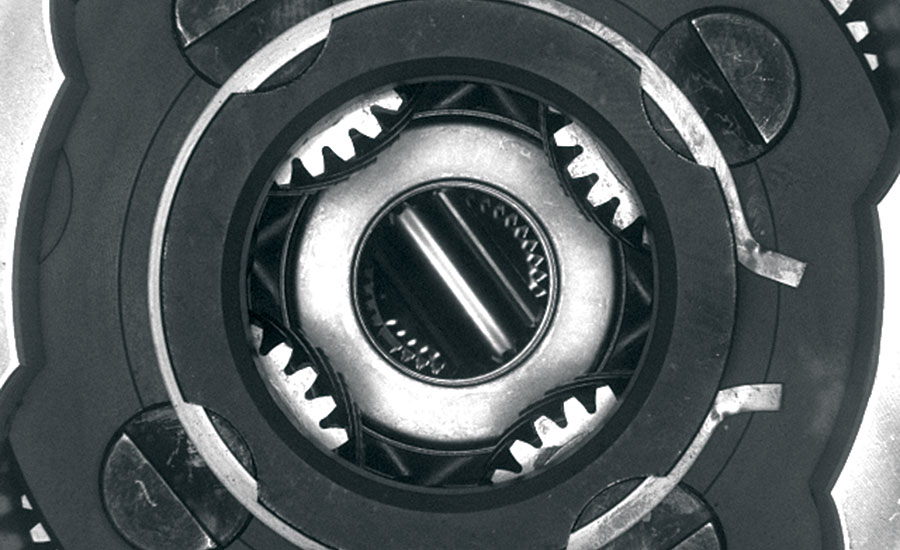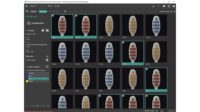Vision Systems Boost Interface Capabilities to Ease Integration with Factory Networks
The latest generation of machine vision systems and barcode readers offer substantial improvements

The manufacturing industry is turning to machine vision to help produce increasingly complex products at higher levels of quality than ever before. The rapid proliferation of vision systems creates the need for robust and high-speed connectivity between the many vision systems in the modern factory and industrial factory floor and office networks. The latest generation of machine vision systems and industrial barcode readers addresses this challenge by incorporating Ethernet connectivity and tools to communicate directly with programmable logic controllers (PLCs), robot controllers, personal computers (PCs) and human machine interfaces (HMIs) in an integrated process control system. The new capabilities increase the value of vision systems and barcode readers by enabling the information they generate to be more easily accessed and utilized in other applications while reducing the time and cost required for implementation.
VISION SYSTEM COMMUNICATION CHALLENGES
Rather than applying vision only to the operations that are most critical from a quality standpoint, many manufacturers today include vision as part of their standard process that is used throughout every manufacturing cell. The result is that in the modern manufacturing plant today it is not unusual to have thousands of vision systems inspecting virtually every operation. Connectivity is essential to vision and barcode applications as a means to share data, support decision-making and enable highly-efficient integrated processes. So the trend towards the proliferation of machine vision increases the need for fast and robust communications between vision systems and the many other devices and systems involved in automating the factory.
Many PC-based vision systems offload image processing to personal computers through vision interfaces such as IEEE 1394a, USB Vision and Camera Link. The PC processes the image to produce actionable information and then typically connects to the factory network through one of several industrial Ethernet protocols. But in recent years there has been a trend towards the use of vision systems that combine a library of advanced vision tools with high-speed image acquisition and processing. This approach eliminates the need for the PC and cabling from the PC to the camera which provides significant savings for today’s factories with many vision systems. Besides cost savings, integrated vision systems are also typically considerably easier to install and maintain because they provide a more stable platform than Microsoft Windows-based alternatives, requiring less maintenance, and fewer service pack updates and patches to install. Being configurable, rather than programmable, smart camera vision systems can also make it easier for manufacturers to accommodate future changes in regulations and standards.
The trend towards integrated vision systems that eliminate or reduce the need for PCs puts the onus on the vision system for communicating with the factory network. The traditional approach for interfacing between vision system and image-based barcode readers involves the use of RS-232 serial lines or USB connections. But this approach surrenders some of the advantages of the vision system methodology since PCs are needed to serve as an interface between the vision systems and the factory network. Considerable expenses can be involved in purchasing the PCs and cabling needed for communications between the vision systems and the factory and office networks.
ADDING ETHERNET TO THE VISION SYSTEM
The latest generation of barcode readers and machine vision systems incorporate Ethernet ports that enable them to be directly connected to any switch or hub on a factory network and communicate with all other devices on the network such as PLCs, robot controllers, HMIs and PCs using Industrial Ethernet protocols. Since the new Ethernet-capable vision systems and barcode readers are network devices, they can be easily accessed from any terminal connected to the network. Thus, they eliminate the need for a host PC that will translate USB or RS-232 communication to a central or PLC network.
Compared to other communication methods, industrial Ethernet provides superior noise immunity and speed and makes integration of multiple readers into existing network environments for data access, control, and monitoring of individual readers very easy to install, set up, and integrate. Additional cost savings arise from the elimination of software on the PC and, for industries subject to Good Manufacturing Practices (GMP), the elimination of the need to validate the PC and its software. Direct Ethernet communications between the barcode reader or machine vision system and the factory network improves scalability by making it possible to add barcode readers or vision systems without having to add other hardware or software. The latest generation of vision systems and barcode readers also generally includes RS-232 and USB connectivity which enables direct connection to a PC for setup and troubleshooting as well as implementation in legacy applications.
Because the new generation of vision systems can be easily linked together and managed as a system over a network, the overall cost and effort involved in implementing and maintaining vision is reduced. Networked vision systems, vision sensors and barcode readers enable data and images from all devices to be collected at a central point, viewed on a single monitor and archived for trend analysis and continuous process improvement. Networking also allows vision systems to increase manufacturing agility by automating procedures such as changeovers for mixed-model processing.
Advanced vision systems and sensors offer software tools to centralize application development and network administration. An engineer can set up and modify vision applications, share applications with other plant sites and remotely troubleshoot problems with technicians, all without ever leaving the office. Such tools make it very easy to add new vision sensors to an existing line or copy existing vision sensor applications to new vision sensors for reuse on a new line.
Handheld barcode readers are also being fitted with similar capabilities that make it possible for these devices to communicate directly with a PLC, thus eliminating the need for a PC. Industrial protocols allow commands to be sent directly to the reader from the PLC, eliminating the custom software often found on the gateway PCs. Ethernet connectivity also allows for data and images to be archived directly through FTP support for later review and analysis while standard and complex data formatting is handled inside the reader.
SUPPORT FOR LEADING COMMUNICATIONS PROTOCOLS
The latest generation of vision systems and barcode readers provides drivers, templates and sample code for open standard industrial Ethernet communications protocols such as EtherNet/IP, Modbus TCP/IP, and Profinet for connection to a wide range of PLCs and other automation devices. Vision systems can communicate with mostly any make or model of robot and pre-configured drivers, ready-to-use templates and sample code are available for the most popular models. Discrete I/O and serial protocols are available to support older PLCs and devices without network connectivity.
The two most popular Industrial Ethernet protocols are Ethernet/IP and Modbus TCP/IP. Ethernet/IP combines standard Ethernet technologies with the Common Industrial Protocol (CIP) which provides services and device profiles needed for real-time control applications as are needed in many factory automation applications. The fact that Ethernet/IP leverages the standard transport and control protocols used on the Ethernet means that it works perfectly with inexpensive, high-performance standard Ethernet devices already found in most factory and office environments. Ethernet/IP and CIP technologies are managed by ODVA Inc., a trade and standards organization with over 300 corporate members.
ModBus TCP/IP is a messaging protocol that was originally developed by Modicon but is now used by hundreds of vendors to transfer discrete I/O and register data between control devices. Modbus/TCP uses Ethernet TCP/IP as its transport protocol so it is compatible with the Ethernet devices that have become the de facto standard of enterprise networking. Modbus is used to communicate between devices such as PLCs, vision systems, HMIs, sensors and instruments in a wide range of factory automation applications. The openness, simplicity, relatively low hardware requirements and streamlined development process of Modbus TCP/IP has resulted in wide popularity. There are thousands of devices that support Modbus TCP/IP available today and approximately seven million nodes installed in North American and Europe alone.
CONCLUSION
The latest generation of machine vision systems and barcode readers offer substantial improvements by providing Ethernet connectivity and tools to communicate directly with PLCs, robot controllers, PCs and HMIs. Key benefits include eliminating the need for the PC and cabling from the PC to the vision system or barcode reader, eliminating the need for software on the PC, and the ability to communicate from anywhere on the factory network. V&S
Looking for a reprint of this article?
From high-res PDFs to custom plaques, order your copy today!








